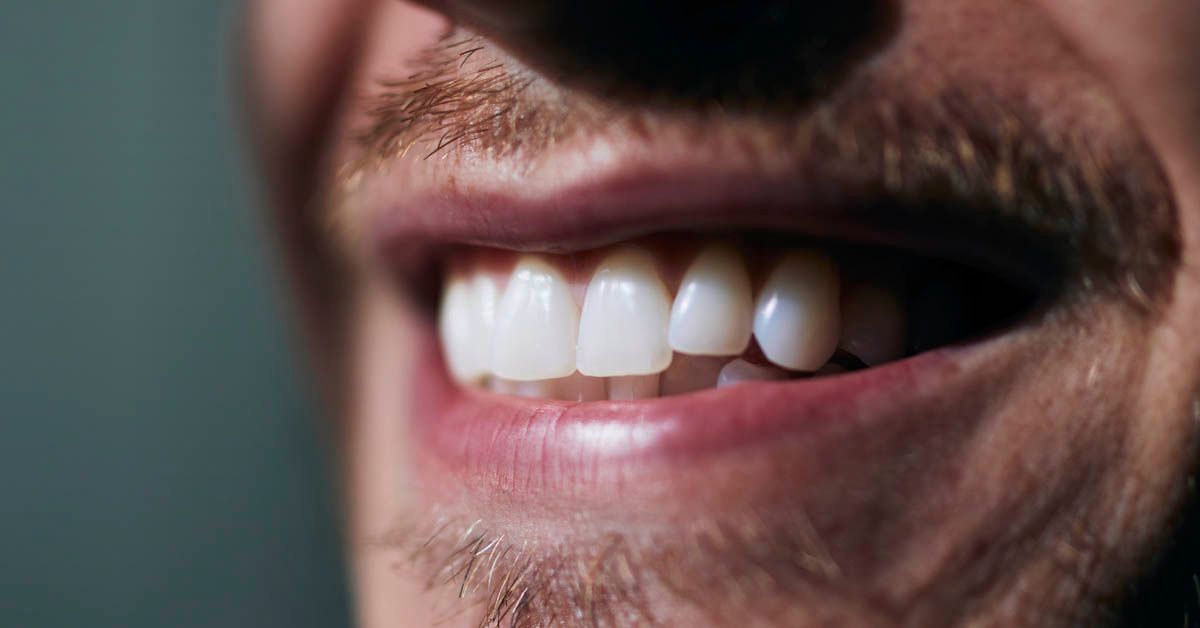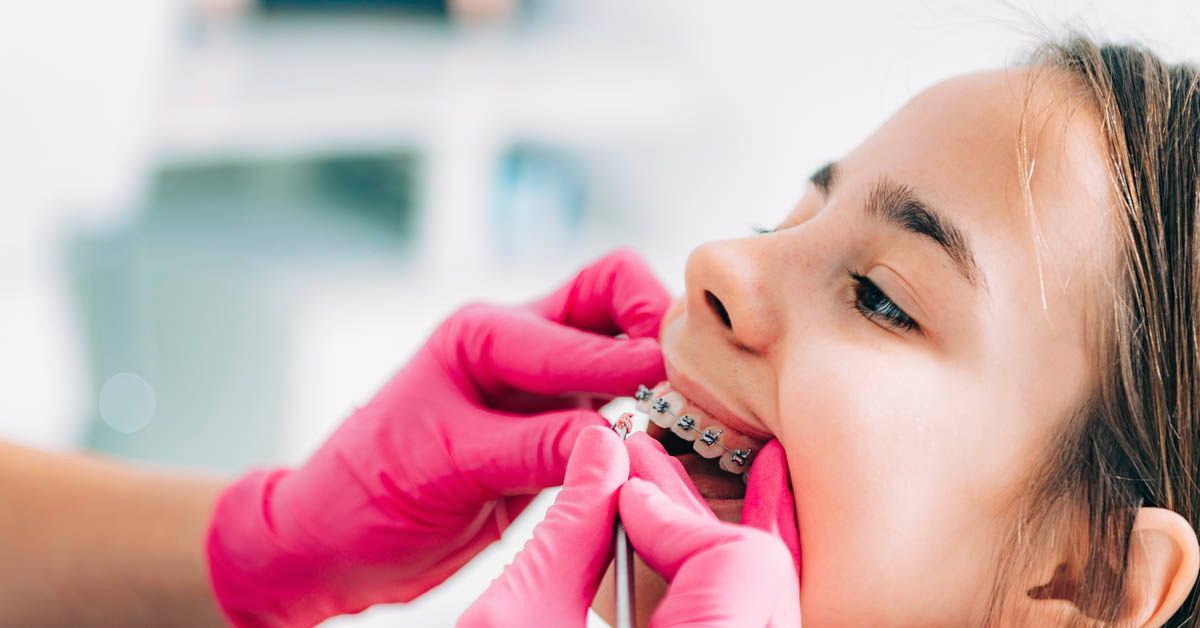Crowded teeth: what causes it and how to fix it
Crowded teeth, also known as overcrowded teeth or dental crowding, is an extremely common dental issue - one that orthodontists see the most. In this article we’ll touch on what teeth crowding is, what causes it, and the different treatments available to fix it.
What is crowding or overcrowding teeth?
The first step to learning about crowding or overcrowding teeth, is looking at what it is. It can be defined as a dental malposition caused by a lack of space, which in turn shifts the teeth so that they are not aligned correctly.
Crowded top, but especially bottom teeth is commonly seen in both children and adults. Usually children when they begin to lose their baby teeth to make room for the permanent ones, and adults when there simply isn’t enough space in their mouth.

What causes crowded teeth?
As mentioned above, crowded teeth are normally caused by a lack of space, but that’s not the only reason we see dental crowding. Here are some other frequent causes of crowded teeth:
- When the jaw is too small
- When the teeth are larger and can’t fit comfortably in the jaw
- When there is a combination of large teeth and a small jaw
- When the patient has a ogival or narrow palate
- When a person has extra or too many teeth
- When a tooth is broken or missing and the teeth around it start to shift
Types of teeth crowding
There are three different types of teeth crowding that are split up based on the origin of the issue.
First
The first type is hereditary, meaning that if your jaw is too small, most likely your children would have the same problem.
Second
The second type of teeth crowding is caused by bad oral habits or fixations. For example it can be seen in children that suck their thumb or use a pacifier too long.
It can also be seen in kids who lose their baby teeth prematurely. When the permanent teeth are not ready to grow in, but have the space to move, they often do.
Third
Lastly, the third type is when the wisdom teeth grow in (erupt) without having enough space to support them. They can displace all of the existing teeth and cause dental crowding.

Degrees of crowding
Before overcrowded teeth can be fixed, the orthodontist will need to assess and establish the degree of complexity of the case in order to find an effective and adequate solution.
During your initial consultation, your professional should tell you if you suffer from mild, moderate, or severely overcrowded top and bottom teeth. They will take an X-ray and a 3D scan, as well as perform a detailed dental study to get these results.
Mild crowding teeth
A case with mild crowding teeth is defined as a single tooth that’s missing less than 3mm of space.
Moderate crowding teeth
Then we have moderate crowding teeth. This is when 2 or 3 teeth are misaligned with 3-5mm of jaw space missing.
Severe crowding teeth
Finally, we have severe crowding teeth which is when teeth sit outside the jawline and more than 6mm of space is needed.
What issues can occur if teeth crowding is left untreated?
Many people mistake overcrowded teeth for being merely just a cosmetic issue. But the truth is, having crowded top or bottom teeth can cause many health problems. Listed below are some of the most common issues that can result from teeth crowding that will eventually require treatment:
- Poor dental hygiene. When it’s more difficult to access all areas of the teeth and use dental floss correctly, it’s also difficult to keep your mouth healthy. It can cause the accumulation of bacterial plaque, which in turn increases the likelihood of developing cavities and tartar. You should also remember that plaque is responsible for bad breath.
- In the most severe cases of crowding teeth where dental hygiene is difficult, the patient may end up suffering from inflammation of the gums and other periodontal diseases.
- Another problem that stems from crowded teeth is that the enamel and teeth wear out and deteriorate more quickly.
- Lastly, the overlap can also lead to more serious occlusion or bite problems.

How to fix crowded or overcrowded teeth based on the degree
When it comes to learning how to fix crowded teeth, as we touched on before, the treatment for teeth crowding depends on the severity of the case. That’s why it’s important to find out the degree of your crowded teeth in your initial consultation.
Let’s take a look at how to fix crowded or overcrowded teeth and the treatment options based on severity:
Mild cases
In cases where the overlap is only minor and less than 3mm of space is missing from the dental arch, patients should consider using veneers.
If you’re wondering how to fix crowded teeth without braces, this is one of those options. Made of ceramic or composite materials, dental veneers adapt perfectly to the color of the teeth for a very aesthetically pleasing and natural result.
Moderate to severe cases
When the case is more complex, orthodontic treatment becomes the most effective solution for overcrowded top and bottom teeth. This can be accomplished by using various techniques, as we’ll see below, to obtain satisfactory results.
Teeth crowding treatment based on the patient’s age
Treatment for overcrowded teeth in children
It’s recommended that at the age of 6, children make their first visit to the orthodontist, to monitor the development of the teeth and jaw bones. If the orthodontist detects any problems before all the permanent teeth have grown in, like the jaw being too narrow, the orthodontist will most likely recommend starting interceptive orthodontic treatment for your child.

Treatment for overcrowded teeth in adults
Once the permanent teeth start to grow in, which for most people is around age 12, corrective orthodontics, like braces, can be used to treat crowded teeth. There are a number of different orthodontic options for crowded teeth for you to choose from depending on your needs and budget.
- Traditional metal braces: the braces correct the crowded teeth by using metal brackets placed on each tooth and connected by a metal arch to exert continuous pressure until the teeth are straight.
- Invisible braces: like the previous type of braces, invisible or clear aesthetic braces can be made of sapphire or ceramic materials for a more aesthetically pleasing treatment.
- Self-ligating braces: made of metal or transparent materials, their brackets are what differentiates them from traditional braces. The brackets enclose the archwire, and don’t require use of elastics to attach the wire.
- Lingual Braces: lingual braces are similar to traditional braces, except that they are placed on the back of the teeth toward the inside of the mouth, making them invisible from the outside. This is a great orthodontic option with braces for fixing crowded teeth discreetly.
- Invisible aligners: clear aligners have revolutionized the orthodontic market in the last few years with an innovative system that allows patients to align and treat bite problems in a comfortable and aesthetically pleasing way. The invisible aligners can be removed during meals and for brushing your teeth to support greater comfort and superior hygiene. These have become the most popular orthodontic options for how to fix crowded teeth without braces.

Associated techniques
Sometimes certain cases require a little extra help when it comes to dealing with crowded top and bottom teeth.
IPR (Interproximal Reduction) for crowding
Dental stripping, or interproximal enamel reduction also known as IPR, is a procedure that creates space between the teeth prior to orthodontic treatment. This is only used in patients with milder crowding.
During the procedure, the dentist will file down some of the teeth to reduce their width by 0.2-0.5mm. It’s a painless procedure that’s performed without anesthesia.
Tooth extraction for overcrowding
When the level of dental crowding is more severe, the orthodontist may need to remove one or more teeth to create space and ensure the perfect alignment.
End of treatment retainers for crowded teeth
Orthodontic treatment doesn’t end once you get your braces off. It’s necessary to wear a retainer to keep the results and the teeth correctly aligned.
They say teeth have a "memory" and tend to return to their original position after orthodontic treatment. Additionally, they’re constantly moving throughout our life, so it is important to wear a post-treatment orthodontic retainer to prevent your teeth from becoming crowded again.
Impress: how to fix crowded teeth without braces
If you’re wondering if aligners can fix crowded teeth, the answer is yes! Invisible aligners are the latest technology in orthodontics. In addition to being removable, they offer numerous advantages when it comes to fixing overcrowded top and bottom teeth. Impress aligners help correct the appearance of your smile comfortably and discreetly, making them a great solution to crowded teeth without the need for braces.
The medical focus that Impress offers is designed to guarantee the best results. Plus, having certified orthodontists examine, design and follow your case is essential to avoiding health risks.

You should also know that the quality of the materials used in Impress invisible aligners makes our treatment just as effective as traditional orthodontic devices, while offering better oral hygiene. And they don’t cause wounds and sores like metal braces. In addition, you can enjoy eating without any restrictions, because you can take them out.
Once you’re ready to start your invisible orthodontic treatment at Impress, our specialists will guide you through the necessary pre-treatments so that you can get a perfect smile in the easiest possible way.
Now that you know that aligners can fix crowded teeth, what are you waiting for? Get in touch with us by calling (888) 490 1421 or book your initial consultation online.
Our invisible orthodontics will give you straight teeth and the smile you’ve always dreamed of.
Frequently asked questions about crowded teeth
How long do braces take to fix crowded teeth?
The duration of treatment depends on the complexity of the case and the type of braces you get, some patients will only need 6 months while other cases may take up to 24 months.
Can crowded teeth cause pain?
Since oral hygiene can be obstructed by teeth crowding it can lead to gum infections, cavities and more serious problems that can in turn cause pain.
Can veneers fix crowded teeth?
Veneers are an effective solution when the case is mild. It can be done during the first consultation.
Can wisdom teeth cause crowding?
Some evidence would support that wisdom teeth can cause crowding as they apply pressure and slowly move the rest of the teeth forward.



